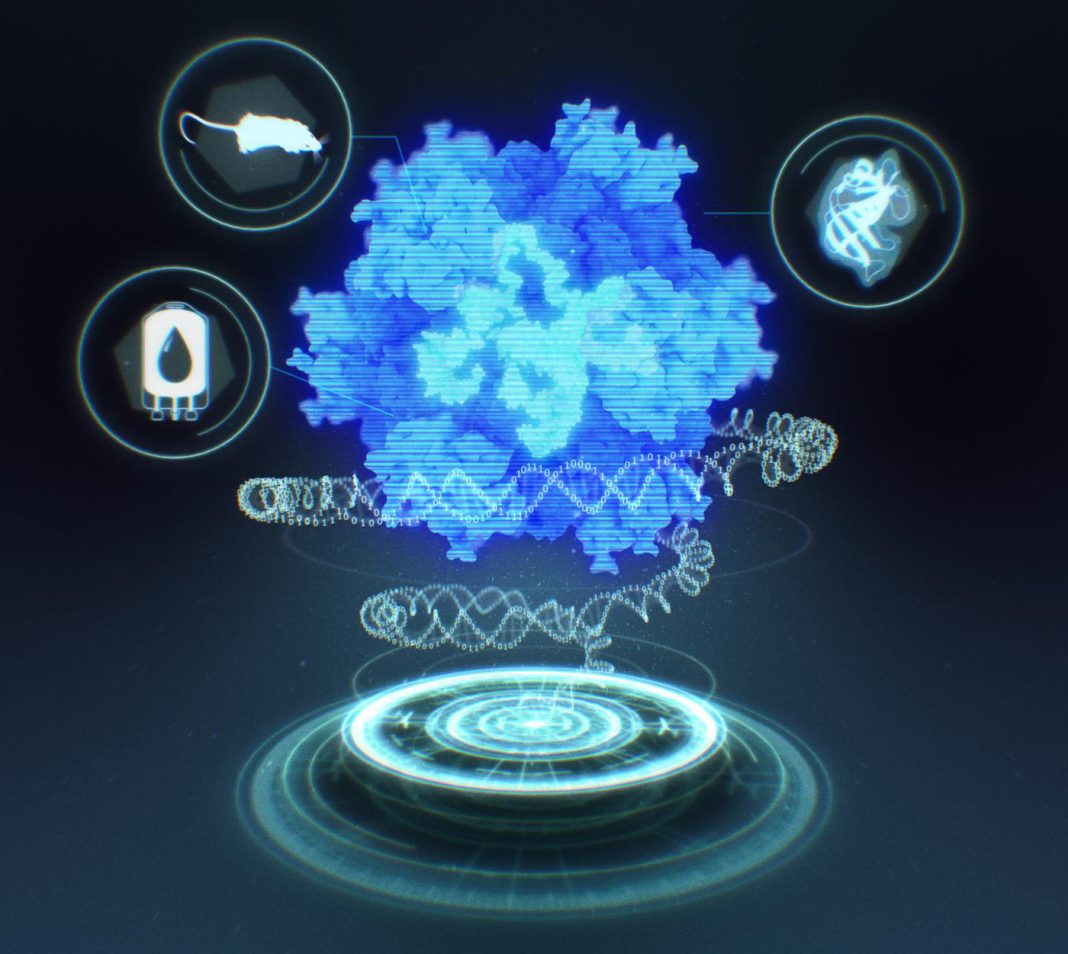It’s a protective shell, very much like those used by viruses to package and ferry their genomes. This shell, however, is built from computer-designed proteins—which sounds fairly innocuous. Such a shell, should it be used to encapsulate a drug, might facilitate the drug’s delivery. It’s not anything that could advance research into artificial life. Or could it?
Well, it could, and here’s why: The shell is a synthetic nucleocapsid that packages its own full-length messenger RNA (mRNA) genome. While the nucleocapsid–mRNA combination does not qualify as an artificial virus—the construct cannot copy itself to reproduce—it can, under selective pressure in the laboratory, evolve virus-like properties.
Reasoning that synthetic systems composed of nonviral proteins could provide a blank slate to evolve desired properties for drug delivery and other biomedical applications, researchers based at the University of Washington Institute for Protein Design decided to create synthetic nucleocapsids while using a computationally driven “bottom-up” approach. These researchers found that their synthetic protein assemblies could encapsulate their own genetic materials and evolve new traits in complex environments. What’s more, the researchers avoided the safety risks and engineering challenges associated with viruses.
Details of the work appeared December 13 in the journal Nature, in an article entitled “Evolution of a Designed Protein Assembly Encapsulating Its Own RNA Genome.” This article began by describing how the University of Washington researchers created synthetic nucleocapsids, which are computationally designed icosahedral protein assemblies with positively charged inner surfaces that can package their own full-length mRNA genomes. Then the article recounted how the nucleocapsids evolved virus-like properties. Using Escherichia coli as an expression host, the nucleocapsids generated diverse populations.
“Several generations of evolution resulted in markedly improved genome packaging (more than 133-fold), stability in blood (from less than 3.7% to 71% of packaged RNA protected after 6 hours of treatment), and in vivo circulation time (from less than 5 minutes to approximately 4.5 hours). The resulting synthetic nucleocapsids package one full-length RNA genome for every 11 icosahedral assemblies, similar to the best recombinant adeno-associated virus vectors.”
The scientists created these assemblies in their search for new ways to transport therapeutic cargos into specific types of cells without using viruses as vehicles. “Targeted drug delivery is a major unsolved need in medicine,” explained Marc J. Lajoie, Ph.D., one of the article’s lead authors. “Currently, researchers are using viruses, which are effective, but difficult to engineer, or they are using polymeric nanoparticles, which are engineerable, but less effective at targeted delivery.”
In addition to their potential for biomedical applications, the newly designed protein assemblies could be groundbreaking in synthetic life research. They are believed to be the first fully synthetic assemblies to package their own genetic materials and evolve new traits. These are functions normally associated with living things.
Lajoie explained that, unlike living viruses, these synthetic genetic cargo-carriers can't copy themselves to reproduce. “Still,” added Gabriel L. Butterfield, another lead author, “they rival viruses in genome packaging efficiency, and are much simpler and easier to engineer.”
Combining computational design with evolution provides a fresh opportunity to develop new biological functions. In this way, the researchers observed, complex properties required for biomedical applications were introduced into these protein assemblies. These included improvements in their ability to package RNA, enhanced resistance to blood (which has substances that would usually degrade such assemblies), and a longer circulation time in living mice.
Improvements in each property came from changes to specific regions of the capsid. Initial packaging came from redesigning the interior to electrostatically capture RNA. Following this, evolutionary steps were: evolving the interior to better foster RNA packaging, evolving protection against RNA-damaging enzymes and other destroyers in the blood, and evolving the exterior to increase circulation time in living mice.
“We designed synthetic nucleocapsids from scratch based on two completely unrelated proteins,” Lajoie noted. “This is exciting because we were able to design functions that are essential for life without having to use existing cells as a template.”
Future work will carry on the combined design-and-evolve strategy to try to optimize the function of the protein assemblies in complex settings, such as those in live tissues.






